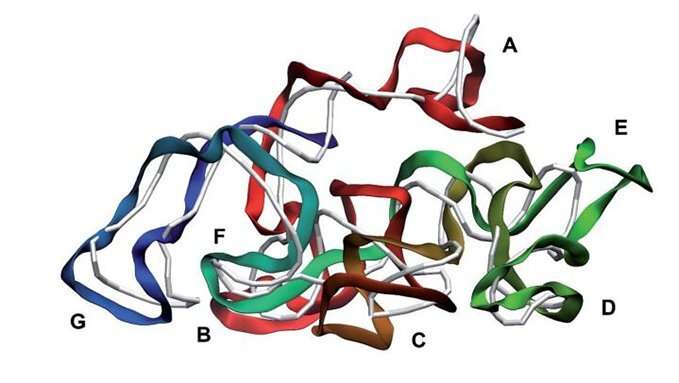This article has been reviewed according to Science X's editorial process and policies. Editors have highlighted the following attributes while ensuring the content's credibility:
fact-checked
trusted source
proofread
World-first computational reconstruction of a virus in its biological entirety

An Aston University researcher has created the first ever computer reconstruction of a virus, including its complete native genome.
Although other researchers have created similar reconstructions, this is the first to replicate the exact chemical and 3D structure of a live virus.
The breakthrough could lead the way to research into an alternative to antibiotics, reducing the threat of anti-bacterial resistance.
The research, "Reconstruction and validation of entire virus model with complete genome from mixed resolution cryo-EM density," by Dr. Dmitry Nerukh, from the Department of Mathematics in the College of Engineering and Physical Sciences at Aston University is published in the journal Faraday Discussions.
The research was conducted using existing data of virus structures measured via cryo-Electron Microscopy (cryo-EM), and computational modeling which took almost three years despite using supercomputers in the UK and Japan.
The breakthrough will open the way for biologists to investigate biological processes which can't currently be fully examined because the genome is missing in the virus model.
This includes finding out how a bacteriophage, which is a type of virus that infects bacteria, kills a specific disease-causing bacterium.
At the moment it is not known how this happens, but this new method of creating more accurate models will open up further research into using bacteriophage to kill specific life-threatening bacteria.
This could lead to more targeted treatment of illnesses which are currently treated by antibiotics, and therefore help to tackle the increasing threat to humans of antibiotic resistance.
Dr. Nerukh said, "Up till now no one else had been able to build a native genome model of an entire virus at such detailed (atomistic) level."
"The ability to study the genome within a virus more clearly is incredibly important. Without the genome it has been impossible to know exactly how a bacteriophage infects a bacterium."
"This development will now allow help virologists answer questions which previously they couldn't answer."
"This could lead to targeted treatments to kill bacteria which are dangerous to humans, and to reduce the global problem of antibiotic-resistant bacteria which are over time becoming more and more serious."
The team's approach to the modeling has many other potential applications. One of these is creating computational reconstructions to assist cryo-Electron Microscopy—a technique used to examine life-forms cooled to an extreme temperature.
More information: Vladimir S. Farafonov et al, Reconstruction and validation of entire virus model with complete genome from mixed resolution cryo-EM density, Faraday Discussions (2022). DOI: 10.1039/D2FD00053A
Provided by Aston University




















